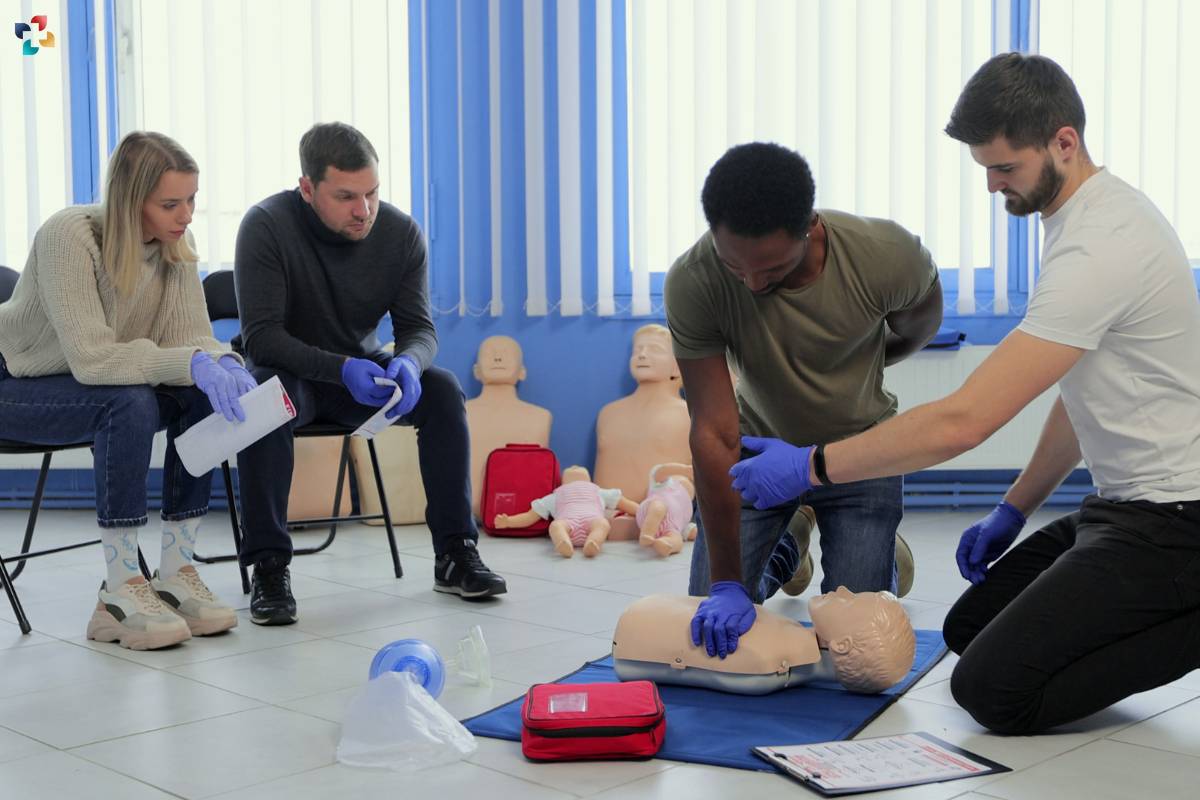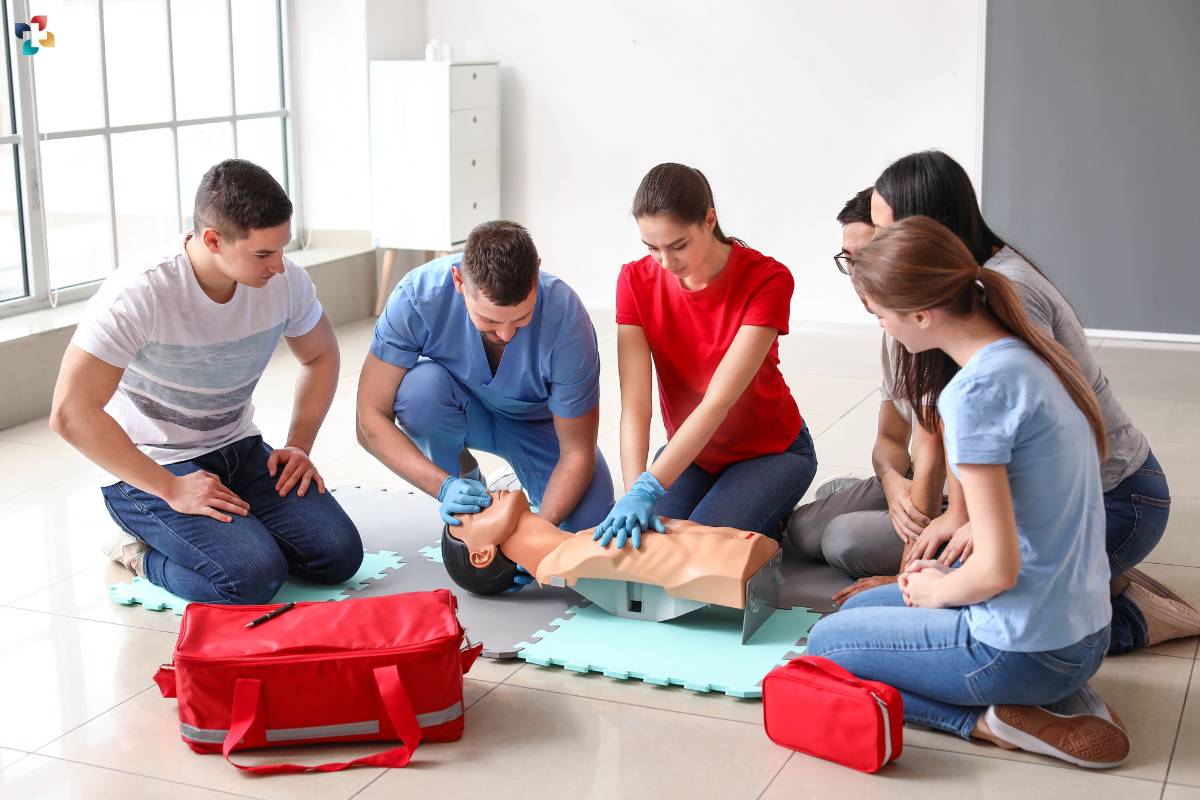With our fast-paced lifestyles and the pressures that people are handling at work and in their lives, emergencies can now strike at any given moment. It could be a sudden cardiac arrest, a choking incident, or an accidental drowning. In these critical situations, knowing how to perform CPR (Cardiopulmonary Resuscitation) can mean the difference between life and death. Learn CPR is a skill that should be in everyone’s toolkit, as it empowers individuals to be immediate responders and possibly save lives. In this article, we’ll explore why learning CPR is essential, how it can make a difference in emergencies, and the steps involved in learning this life-saving technique.
The Importance of Learning CPR
1. Immediate Response
When an individual experiences a cardiac arrest, every second counts. The heart stops pumping blood, and without a steady oxygen supply, the brain and other vital organs can be damaged within minutes. Learning CPR allows you to take immediate action and potentially sustain a person’s life until professional help arrives.
2. Increased Survival Rates

Research has shown that when CPR is administered within the first few minutes of cardiac arrest, survival rates significantly increase. Immediate chest compressions can help maintain blood circulation, providing a lifeline for the victim until advanced medical care arrives.
3. Empowerment
Knowing how to perform CPR empowers you to be a first responder in emergencies. You don’t have to stand by helplessly; you can take control of the situation and potentially save a life. It’s a sense of empowerment that can make a significant difference in your community.
4. Universal Skill
CPR is a universal skill that knows no boundaries. It’s not limited by age, gender, or profession. Anyone can learn CPR, making it accessible to all, regardless of their background or experience.
5. Community Resilience
When more people in a community are trained in CPR, the community becomes more resilient to sudden cardiac arrests and other emergencies. You can help create a network of individuals ready to step in when needed, which can be particularly valuable in remote or rural areas with limited access to immediate medical care.
6. Personal Preparedness
Learning CPR is not just about helping others; it’s about personal preparedness as well. You never know when you might find yourself in a situation where your CPR skills are required to save a loved one or even a stranger.
How CPR Saves Lives
When an individual experiences cardiac arrest, their heart suddenly stops beating effectively. Blood flow to vital organs, including the brain, is interrupted, and oxygen levels rapidly deplete. CPR is a combination of chest compressions and rescue breaths that mimics the heart’s pumping action and helps maintain blood circulation. Here’s how CPR saves lives:

- Restores Blood Flow: The chest compressions in CPR manually pump blood throughout the body, ensuring oxygen-rich blood reaches the brain, heart, and other essential organs.
- Buys Time: While performing CPR, you’re buying time for the victim until professional help arrives. Every minute without CPR reduces the chances of survival, so the sooner it’s initiated, the better.
- Assists in AED Usage: An AED (Automated External Defibrillator) is often used alongside CPR to restore the heart’s normal rhythm. CPR helps improve the chances of the AED’s success by keeping blood circulating.
- Minimizes Brain Damage: The brain is highly sensitive to oxygen deprivation, and CPR can minimize the damage caused by lack of oxygen until medical personnel can take over.
- Supports Breathing: In cases where a victim is not breathing, rescue breaths delivered during CPR can provide necessary oxygen. This is particularly crucial in situations like drowning or choking.
How to Learn CPR
Now that we understand why learning CPR is crucial and how it can save lives, let’s look at the steps involved in acquiring this life-saving skill:
1. Find a CPR Course
The first step is to find a CPR course in your area. These courses are usually offered by organizations like the American Heart Association, the Red Cross, and local healthcare providers. You can search online or contact local community centers and hospitals to find upcoming courses.
2. Choose the Right Type
CPR courses come in various types, including basic CPR, CPR for healthcare providers, and CPR for infants and children. Choose the type that suits your needs and potential scenarios you may encounter.
3. Enroll in the Course
Once you’ve found a suitable course, enroll in it. Many courses offer both in-person and online options, so you can select the format that best fits your schedule and learning preferences.
4. Attend the Training

During the course, you will receive hands-on training from certified instructors. You’ll learn the correct techniques for chest compressions, rescue breaths, and how to use an AED. Pay close attention to the instructions and ask questions if you’re unsure about anything.
5. Practice
Hands-on practice is essential in mastering CPR. You’ll have the opportunity to practice on mannequins, which simulate real-life scenarios. Repeated practice helps build muscle memory and ensures that you can perform CPR confidently in an emergency.
6. Certification
After completing the course and demonstrating your CPR skills, you will receive a certification card. This card is valid for a certain period (typically two years) and indicates that you are trained in CPR.
7. Renewal
Remember that your CPR certification expires, so it’s essential to renew it regularly. Most organizations offer renewal courses that allow you to refresh your skills and stay up-to-date with the latest techniques and guidelines.
Conclusion
In an emergency, every second counts, and knowing how to perform CPR can be the difference between life and death. Learning CPR is not just a valuable skill; it’s a responsibility that each of us should embrace. With the potential to save lives, empower individuals, and create resilient communities, CPR is a universal skill that knows no boundaries.
By taking the initiative to learn CPR, you become a first responder, ready to provide immediate assistance when it’s needed most. CPR restores blood flow, buys time for professional help, minimizes brain damage, supports breathing, and enhances the success of automated external defibrillators. These are just a few reasons why everyone should learn CPR.
So, make the choice to invest in yourself and your community by enrolling in a CPR course. Whether you’re a parent, a teacher, a healthcare worker, or just someone who wants to be prepared, learning CPR is a valuable and potentially life-saving skill. Don’t wait for an emergency to wish you knew CPR; take the proactive step to Learn CPR today and be ready to save lives tomorrow.
Also Read: Your Summer Safety Shopping List: Keeping Fun in the Sun











